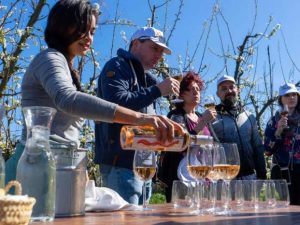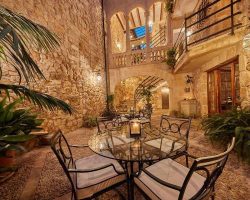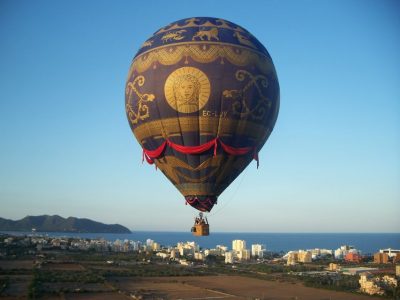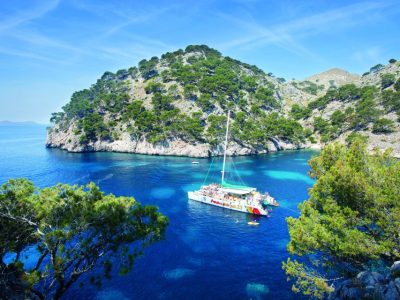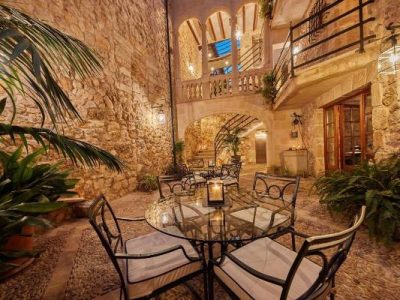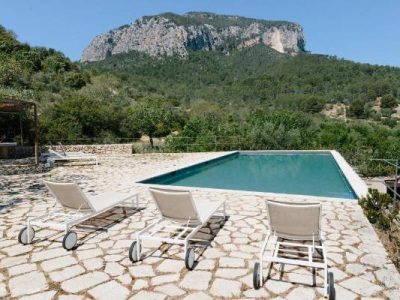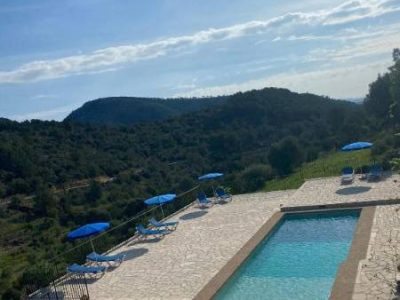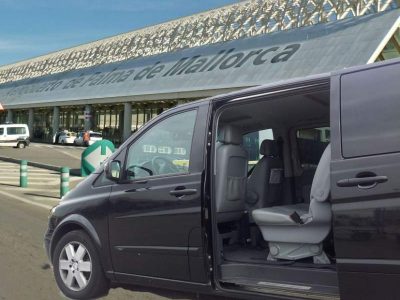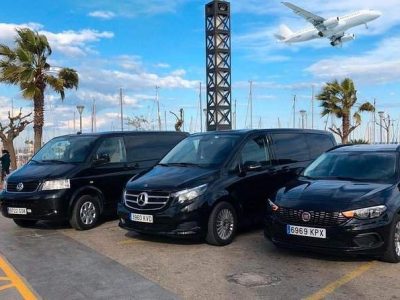All your holiday planning needs in one place, letting you book direct and benefit from official online rates
- Places To Go
- Things To Do
What’s Your Interest?
Traveling with kids
- Blog

Why visit Lloseta
Things to do in Lloseta
Lloseta has a special appeal among hikers and cyclists when we talk sports. Here on the border between the mountains and the rural areas of Mallorca, you have optimal opportunities to use your legwear on eventful day trips in the beautiful nature.
However, the village itself is home to some impressive and interesting sights, i.e. the Aiamans palace and the new theater building.
PALAU DE AIAMANS
The Aiamans Palace is a former noble residence in the heart of Lloseta, dating back to the late Middle Ages. Until 1927, Palau d’Aiamans belonged to the Baron of Lloseta, until it was purchased by the March family (Banco March). Over time, the palace has undergone huge renovations, in fact there is nothing left of the original building, but an incredibly beautiful place to visit when the opportunity arises. Today, the palace serves as a culture and conference center, and the fairytale gardens can be enjoyed from the roadside.
VISIT A LOCAL WINERY
If you are fond of a good glass of wine, then you’re in luck when visiting these areas. The neighboring town of Binissalem is known as the wine capital of Mallorca, however, you don’t need to leave Lloseta to indulge in a tasteful wine experience. The winery of Castell Miquel is situated in beautiful and peaceful surroundings on the mountainside above Lloseta, offering visits almost every day. At the winery, you can taste some of the signature wines made from a creative combination of local grapes and nagelfluh interspersed soil that enhances the taste.
ORATORI DE COCO
On the outskirts of Lloseta you will find the Coco Chapel, named after the nearby river. The chapel was erected in honor of the Virgin Mary, after a sculpture of her was found here by a shepherd boy. The inhabitants saw it as a sign that here should be a place of worship, and the Count of Lloseta paid for the conduct. Today, however, the sculpture is kept in Lloseta’s parish church in the town.
TEATRE DE LLOSETA
Lloseta’s theater differs greatly from the vallage’s rustic house facades, with its modern stylish design. The theater in Lloseta is actually one of the most popular venues in all of Mallorca, and if you are in the mood for a different experience, then a trip here is not so crazy at all.
ESGLÉSIA DE LLOSETA
In the heart of Lloseta you will find the parish church, with its neoclassical style. The church was completed in 1862, and is a merger of two former church buildings.
EXPLORE THE CAVES AND WOODS
Lloseta has been inhabited by humans since 2,500 BC, this is evidenced in some of the caves located in the woods covering the mountainsides above the village. Enjoy walking along the many trails which leads you about in the woods to prehistoric camps, wells and other monuments from a time long gone. The natural areas outside Lloseta are also amazing places to do some birdwatching and enjoy the Balearic wildlife. Some of the birds you can spot here includes kestrels, hawks, owls, red kites, greenfinches and many more. But wildlife is not the only reward of walking in the stunning nature of Lloseta, there are also a number of fantastic viewpoints offering breathtaking panoramic views of the entire area. Tie your shoelaces, grab your gear and get walking.
THE OLD LOADING STATION
Down by the railway you can see the old loading station, which was an important piece in Lloseta’s industrial life in the early 20th century. Lloseta had one of the island’s largest productions of coal and cement, up to 25,000 tons of coal and 400 tons of cement were produced annually here. The loading station was used to fill train carriages that transported it to bla. Palma.
FAQ
Here are the best accommodation options in Lloseta:
Lloseta is located at the foothills of the Tramuntana, approximately 33 km (~21 miles) from Palma airport. The transfer time by car or taxi is about 25 minutes.
A taxi from the airport will cost about 40-45 euros.
If you prefer a more comfortable transfer, consider an air-conditioned private minibus. Book here
The weekly market in Lloseta is held every Saturday morning, starting around 8 am.
Market and Events in Lloseta
Weekly Market in Lloseta
Saturday is the the day of the weekly local farmers and crafts market in Lloseta, held on Plaça Espanya in front of the parochial church. At the market you can sample and purchase delicate local products such as fruits, meats, cheeses, vegetable, flowers, but also a range of clothes, accessories, shoes and crafts. It is not a big market, but a traditional local market synonymous with Spanish culture.
If you are looking for a more vibrant market experience, head to nearby city of Inca on Thursdays for the biggest market in Mallorca. The market in Inca has hundreds of stalls and literally hundreds of thousands of visitors each week.
Events and festivities in Binissalem
April
Pancaritat
The first Wednesday after Easter, the inhabitants of Lloseta gather for a walk out to the oratory of Cocó on the outskirts of the village. Back in the days, it was a tradition to bring the excess food from Easter to a communal meal where there was a special mass.
June
Fira de Sabata i Artesania
In early June, Lloseta celebrates its crafts and shoe-making traditions with a festival. Here you can meet shoemakers, craftsmen and companies from all over Mallorca who come to showcase their profession and skills.
There are typically also several cultural elements, among others. dance performances of traditional Mallorcan folk dances, as well as a concert with the Mallorcan xeremiers.
September
Festa de la Mare de Déu de Lloseta
The first week of September, a major city party is held in Lloseta in honor of the city’s patron saint, the Virgin Mary.
Throughout the week, a number of fun activities and cultural events are arranged that make the party interesting for all ages. The streets are decorated with colored ribbons, there are competitions, games, exhibitions, market, guided tours and of course lots of entertainment in the form of traditional folk dances and music concerts.

Support Local
Supporting local communities during your travels can have a profound impact. Stock up with groceries locally, stop in an artisan shop or enjoy a refreshment at a restaurant or bar. Now more than ever, these small businesses need support from travelers near and far.
Get to know the area of Lloseta
About Lloseta
Lloseta is a charming and friendly village found just 5 minutes from Inca somewhat in the center of the island. There are about 5,700 inhabitants in Lloseta, known as llosetins and llosetines (men and women).
Specialties of Lloseta
Browse any desert card on the island or walk into a pastry shop or bakery, and you will find the Cardenal. Cardenal de Lloseta, is the real name of this sweet cake formed by two layers of sponge cake topped with another layer of meringue, cream and sweet dough. If you have a sweet tooth, the Cardenal de Lloseta is the best local sweet you can get.
History of Lloseta
The first vestiges of human habitation in the area dates back to the pretalayotic period (about 2,500 BC), from which 5 camps, 4 burial sites and 1 fortification has been excavated.
Following the Catalan conquest of Mallorca (1229 – 1232), king Jaume I gave the area to the viscount of Bearn, Guillem de Montcada, who distributed it among his own knights. At that time, the area had two farms; Lloseta and Aiamans, both part of the Juz d’Canarossa, a Muslim district that also included Binissalem.
Lloseta remained a small community up through the Middle Ages, in the end of the 17th century (1697) a cadastre concluded a total of 300 inhabitants.
During the War of Succession, the count of Aiamans, Miquel Joan Ballester Togores, took part in favor of the Bourbon side. He and the family of Sales, owners of the Son Pelai estate, organized armed troops to defend the coastline of Sa Porrassa and Santa Ponça against troops of Felipe V, along with men from Binissalem. The victory of the Bourbon side meant that the count of Aiamans became an important counselor for the council of Palma.
Up until the Spanish Constitution in 1812, Lloseta belonged to the municipality of Binissalem.
From the beginning of the 20th century, Lloseta grew as an important distribution center for coal and limestone, this can be seen in the old loading station next to the railway station. The areas of Selva, Biniamar and Lloseta were all supplying coal and limestone to the rest of the island, and the railway connection of Lloseta made it possible to distribute.
However, mining was not the only industry in Lloseta in the 20th century, shoe production also gave employment to many people. The increasing occupation made Lloseta a more attractive area to live, and so, in the last half of the 20th century the population was about 4,500 inhabitants.
Practical Info
Useful Numbers
Emergency: 112
National police: 091
Local police: 092
Guarda civil: 062
Fire: 080
Maritime emergencies: 900 202 202
Town Hall: +34 971 514 033
Public Transport
Bus lines: 331
Power Supply
220V


